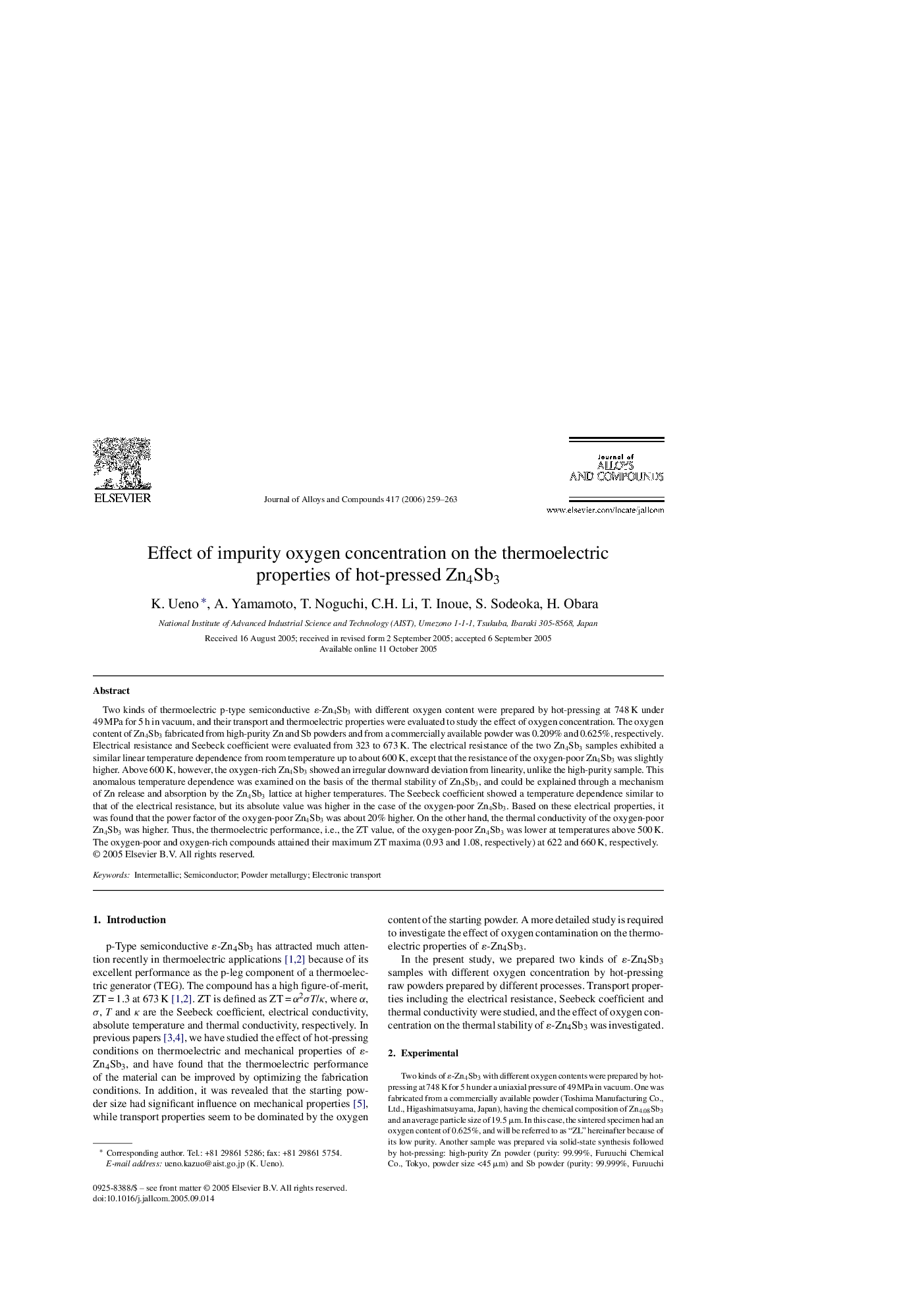| کد مقاله | کد نشریه | سال انتشار | مقاله انگلیسی | نسخه تمام متن |
|---|---|---|---|---|
| 1627552 | 1516456 | 2006 | 5 صفحه PDF | دانلود رایگان |

Two kinds of thermoelectric p-type semiconductive ɛ-Zn4Sb3 with different oxygen content were prepared by hot-pressing at 748 K under 49 MPa for 5 h in vacuum, and their transport and thermoelectric properties were evaluated to study the effect of oxygen concentration. The oxygen content of Zn4Sb3 fabricated from high-purity Zn and Sb powders and from a commercially available powder was 0.209% and 0.625%, respectively. Electrical resistance and Seebeck coefficient were evaluated from 323 to 673 K. The electrical resistance of the two Zn4Sb3 samples exhibited a similar linear temperature dependence from room temperature up to about 600 K, except that the resistance of the oxygen-poor Zn4Sb3 was slightly higher. Above 600 K, however, the oxygen-rich Zn4Sb3 showed an irregular downward deviation from linearity, unlike the high-purity sample. This anomalous temperature dependence was examined on the basis of the thermal stability of Zn4Sb3, and could be explained through a mechanism of Zn release and absorption by the Zn4Sb3 lattice at higher temperatures. The Seebeck coefficient showed a temperature dependence similar to that of the electrical resistance, but its absolute value was higher in the case of the oxygen-poor Zn4Sb3. Based on these electrical properties, it was found that the power factor of the oxygen-poor Zn4Sb3 was about 20% higher. On the other hand, the thermal conductivity of the oxygen-poor Zn4Sb3 was higher. Thus, the thermoelectric performance, i.e., the ZT value, of the oxygen-poor Zn4Sb3 was lower at temperatures above 500 K. The oxygen-poor and oxygen-rich compounds attained their maximum ZT maxima (0.93 and 1.08, respectively) at 622 and 660 K, respectively.
Journal: Journal of Alloys and Compounds - Volume 417, Issues 1–2, 29 June 2006, Pages 259–263